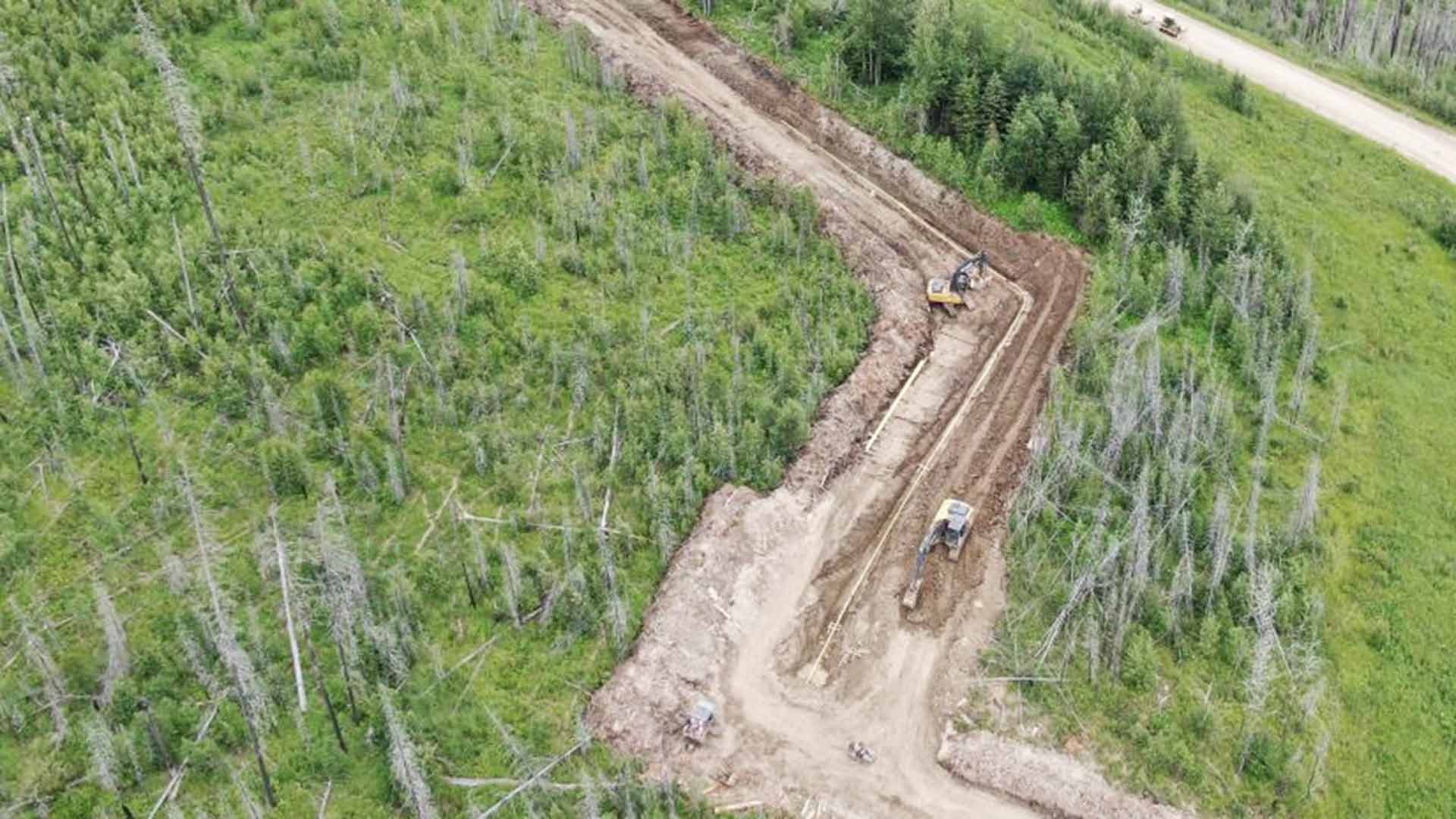In February 2020, SECURE ENERGY (SECURE) publicly introduced the plan to construct the East Kaybob Pipeline System (EKBPS). Construction wrapped up summer 2020 and the Pipeline system is officially operational.
With constructing a pipeline comes endless processes, steps and resources to execute in a safe and efficient manner. Wondering what that entails? Here is a high-level overview on the construction process, provided by SECURE’s midstream infrastructure construction manager.
Survey
To start, a preliminary survey and a First Nations consultation sketch is completed for the selected route.
This is done to:
- Identify which stakeholders and First Nations groups need to be consulted and involved in the project
- Generate final survey plans
- Create third-party line lists for all pipeline crossings
All documentation is then submitted to the Alberta Energy Regulator (AER) for approval and to formulate the final construction plan. The survey will also complete staking/flagging of the approved right-of-way boundaries and all temporary workspaces.
Land Approvals
Landowners (in the case of SECURE’s EKBPS it was Crown Land and First Nations) are approached to review the project details and provide consent for development. Wildlife sweeps and water crossing assessments are also completed to be provided with a package to the AER.
Regulatory Approvals
Once the AER has the project plans and all other required documentation, the company will request a Pipeline License (PL) and provide a notice of construction start through the regulatory team. Site inspections are routinely performed by the AER on environmental and construction activities.
Third party notifications
The company building the pipeline system must notify all surface right holders (pipelines, roads, etc.) along the right-of-way prior to starting any pipeline operations. Once notifications are complete, they will utilize a third-party line locating company to identify all underground utilities. For SECURE, this was completed using Alberta One Call as per our ground disturbance process.
Logging/Clearing
Once at the logging and clearing stage of construction, SECURE engaged with and mobilized contractors specialized in the field. Logging and clearing contractors are responsible for placing matts overtop of any third-party lines to protect them and allow equipment to cross over and continue down the right-of-way.
Salvageable timber is cut, skidded to log decks and processed for delivery to the mills. Non-salvageable timber and brush is mulched, the right of way is stumped and made ready for the pipeline contractor to start.
Right-of-Way Prep/Grade Work
The pipeline contractor follows a safe distance behind the logging operations and prepares the right-of-way for pipe delivery and trenching. Topsoil is stripped off and stored separately as per AER guidelines. The work side of the right-of-way is then graded to allow for equipment and vehicles to access for the unloading and welding of the pipeline.
Placement of Pipeline
Once prep work is complete, the pipe is brought in, unloaded and strung out end-to-end for welding, and sleeving. At this point in time, pipeline joints are bent and checked for integrity to match the direction and landscape of the right-of-way. The welding crew then connects the pipeline segments.
Welding of Pipeline
Every pipeline joint is welded together by certified pipeline welders. Each 18-metre joint of pipe is checked by non-destructive examination to ensure the joints are safely sealed after welding and meet code requirements. A protective sleeve is then placed on each welded joint.
As the pipeline is placed in the trench, a calibrated inspection tool called a holiday detector, is used to verify the integrity of the external protective coating. If any areas are not intact, they are repaired and checked again before being lowered into the trench.
Trenching for Pipeline
Excavators are used to trench the pipeline through challenging topography. Any underground pipelines, roads and water crossings are completed by horizontal directional drilling to minimize ground disturbance.
Backfill and Reclamation
Once the pipeline is in place, the trench is backfilled with soil and the land is reclaimed along the right-of-way. A SECURE Inspector is present for all backfilling operations to ensure no damage to the coating and proper backfill material is used. Pipeline markers are placed along the right-of-way to identify where the pipeline is.
Interested in learning more about SECURE’s East Kaybob Pipeline System? Stay tuned to the blog for more operational stories.



